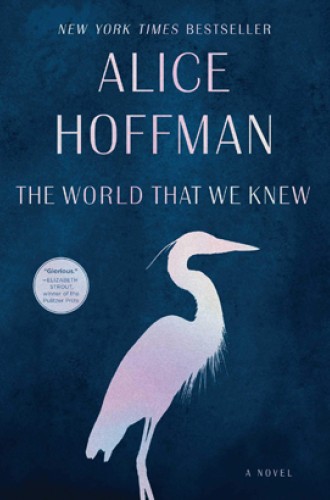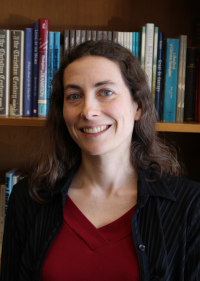The line between human and nonhuman
Alice Hoffman’s Holocaust novel collapses the boundaries between reality and fantasy.
The word golem appears only once in the Bible. After praising God for knitting us together in our mothers’ wombs, the Psalmist proclaims: “Your eyes saw my golem; all the days ordained for me were written in your book before one of them came to be” (139:16). The significance of the word—which means something like “unanimated corpus” or “unshaped form”—took on a rich life in Jewish imagination, especially in medieval Europe during times of persecution. Formed out of clay and inscribed with certain Hebrew words, the golem was a person-like creature, fully alive but not fully human. It was a servant and a protector, fiercely obedient to the person who had created it. Its power, if uncontrolled, could be dangerous. At the heart of the golem’s identity was a set of tensions—between spirit and matter, between protection and danger, between life and death.
These same tensions animate Alice Hoffman’s novel, which takes the legend of the golem as its starting point. Hoffman, who describes herself as an “escapist writer” who’s interested in “fairy tales, myths, and folktales,” is best known for writing about witches. Her best seller Practical Magic was made into a Hollywood film. But she’s also written historical fiction infused with Jewish myth and culture. The World That We Knew weaves all of these interests into a luscious, heartbreaking story about a group of teenagers attempting to escape the Nazis in wartime France and the golem who’s been created to protect one of them.
It’s a harrowing tale. A Jewish doctor is murdered by a gang of thugs on the first page. The next paragraph begins: “In Berlin evil came to them slowly and then all at once. The rules changed by the hour, the punishments grew worse, and the angel in the black coat wrote down so many names in his Book of Death there was no room for the newly departed.” A few pages later, there’s an attempted rape and another violent death. By this point readers have been plunged into the depths of arbitrary arrests, lies, and mass deportations to death camps.
As the teenagers travel through occupied France, obliteration by the Nazis becomes nearly inescapable. This sense of danger makes the book both hard to read and hard to put down. It’s clear from the start that this isn’t the kind of Holocaust novel where the main characters will all make it out alive. Hoffman captures the intentionality, precision, and persistence that fueled the destruction of European Jews and their culture. In this sense her story feels realistic, despite its use of magical realism.
A few of the characters do make it out alive—in part because of the way they band together in resistance, driven by love and self-sacrifice, and in part because they receive help from the nonhuman world. There are angels and demons, a dancing heron, and a clairvoyant old woman who has magical powers. And there’s Ava, the golem that a woman named Hanni creates—with the help of a rabbi’s daughters—to protect her daughter Lea.
Ava has several qualities that golems normally aren’t given. She’s female. She’s allowed to speak. She has a name. She’s made not only from mud but also from a woman’s tears and a teenage girl’s blood. Hanni imagines Ava as “a mother figure who would feel not a forced duty, but real, tangible love” toward Lea. One of the other creators, however, reminds Ava shortly after her creation that she isn’t human: “You should know from the beginning you do not have a heart or a soul and can never be a woman.” And like all golems, Ava is destined to be killed before she becomes too powerful.
As the story progresses, however, Ava seems to gain additional human characteristics. Meanwhile, Lea and her fellow travelers experience increasing dehumanization. The line between human and nonhuman that Ava challenges is the same line that the Nazis transgress as they carry out their plan. Hiding out in the forest with Ava in November 1942, Lea thinks about what has been stolen from the millions of Jews who have already been killed:
They had been sent to the death camps; buried deep in the forests of Poland, body upon body, fragile and naked, twisted and torn; arrested in Rome and Greece and Paris. There were souls that had turned black with horror who now perched in the trees, trembling and stunned by what some men were capable of, unable to move on from the spot where they had been murdered, incapable of entering the World to Come.
Stripped of their dignity, these souls seem to have been made less than human. They hover in the space between life and death.
At the same time, though, Lea dreams of her mother, who has long since been murdered, “shoeless, her hair shorn. But her eyes were shining. Like Rachel in the Torah, who wept with grief over the loss of her children, Hanni wept in those dreams. She was without words, without a mouth, without a body, beneath the dirt, none of which stopped her love.” Will Ava ever be able to experience that kind of love? As the book proceeds, this question intensifies, driving the story forward as much as the question of who will survive.
The idea that love can overcome all, making alive that which has been destroyed, may seem too idealistic for a Holocaust novel. But in this story it works, perhaps because of the way Hoffman uses magical realism to collapse the boundaries between reality and fantasy. If we can imagine a government and its employees systemically hunting down and murdering millions of people simply because they’re Jewish, surely we can imagine girls who form life out of clay, a heron that grieves and dances, angels who hover alongside us in our moments of crisis, and a golem whose loyalty morphs into something like love. If we can wrap our minds around the reality of people committing inhuman acts of violence, perhaps we can also—with Lea—wrap our hearts around the idea of a love that brings life out of the ashes.






